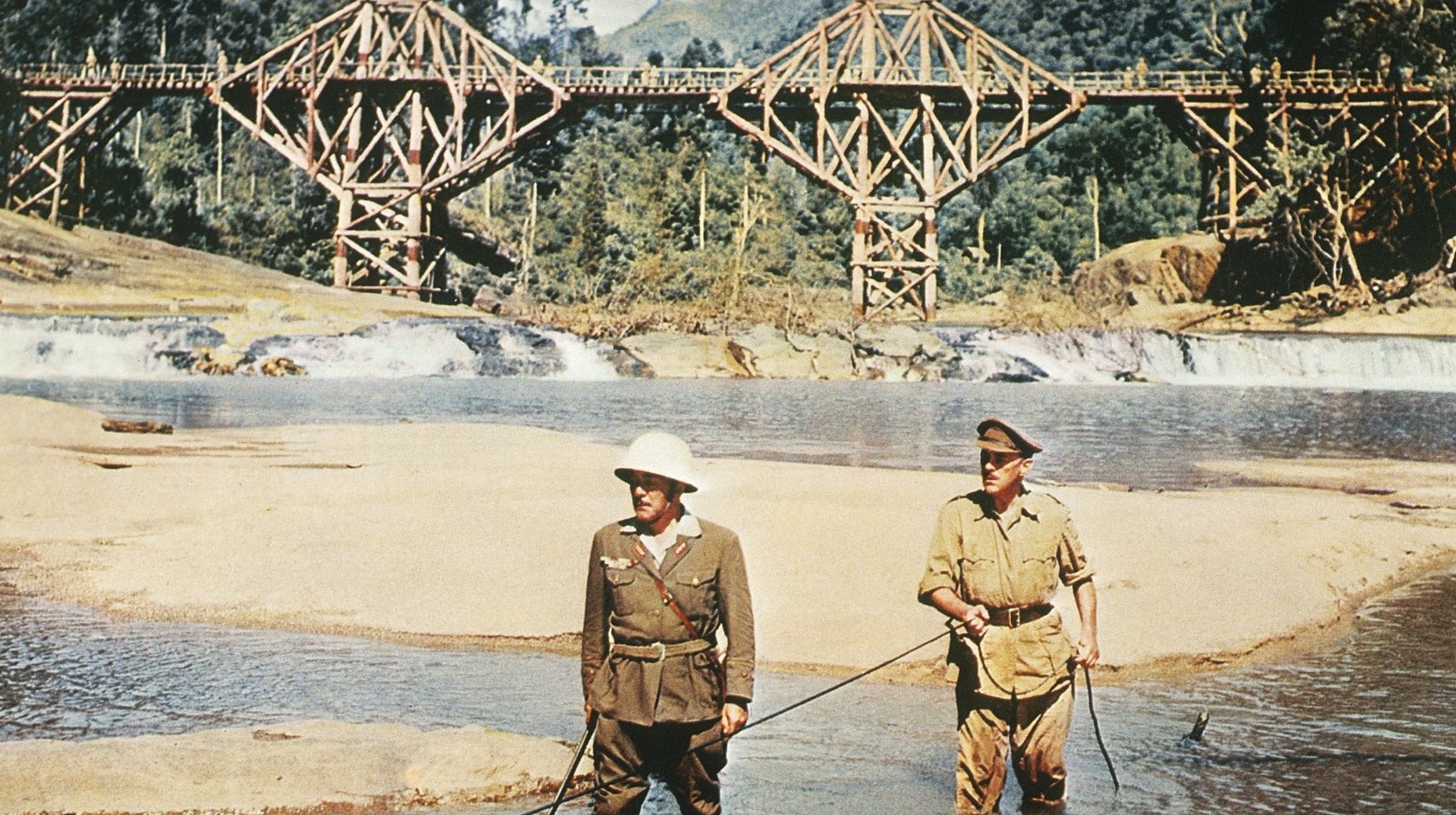
10 Interesting Facts and Figures about “The Bridge on the River Kwai” (1957)
“The Bridge on the River Kwai,” directed by David Lean and released in 1957, is a classic British war film that has left an indelible mark on cinema. Based on the novel by Pierre Boulle, the movie explores themes of honor, duty, and the absurdity of war through the story of British POWs forced to build a railway bridge for their Japanese captors during World War II. Here are ten fascinating facts and figures about this iconic film.
1. Academy Awards Glory
The film won seven Academy Awards, including Best Picture, Best Director for David Lean, and Best Actor for Alec Guinness. It was a remarkable achievement that highlighted its critical acclaim.
2. Box Office Success
“The Bridge on the River Kwai” was a commercial hit, grossing over $30 million in the United States alone during its initial release. This made it one of the highest-grossing films of its time.
3. Iconic Score
The film’s score, composed by Malcolm Arnold, became one of the most recognizable in cinematic history. The “Colonel Bogey March” especially gained popularity, often associated with the film’s themes of resilience and defiance.
4. Filming Location
While the story is set in Burma, most of the film was shot in Ceylon (now Sri Lanka). The lush landscapes provided a convincing backdrop for the intense drama unfolding in the jungle.
5. The Bridge’s Construction
The bridge featured in the film was a real structure built for the movie. After filming, the bridge was left intact for a time but was eventually dismantled, although the location remains a popular tourist attraction today.
6. Alec Guinness’s Transformation
Alec Guinness, who played Colonel Nicholson, underwent significant physical transformation for his role. He lost weight and adopted a more rugged appearance to portray the character’s struggles and hardships effectively.
7. Bill Holden’s Debut
Bill Holden, who portrayed the American prisoner Shears, was not initially the first choice for the role. However, his performance was pivotal, and it helped solidify his status as a leading actor in Hollywood.
8. Cultural Impact
The film has influenced countless other works in cinema and literature, often cited when discussing the moral complexities of war and captivity. Its legacy continues to inspire filmmakers and audiences alike.
9. Historical Significance
The film is loosely based on the real-life construction of the Thai-Burma Railway during World War II, a project that claimed the lives of many POWs and forced laborers. This historical context adds a layer of depth to its narrative.
10. Lasting Recognition
In 1997, the film was selected for preservation in the United States National Film Registry by the Library of Congress, ensuring that future generations can appreciate its artistry and historical significance.
Conclusion
“The Bridge on the River Kwai” remains a landmark in cinematic history, revered for its powerful storytelling, stunning visuals, and complex characters. The film’s exploration of duty and the human condition continues to resonate, making it a timeless classic that invites reflection and discussion long after the credits roll. As viewers engage with its themes, they are reminded of the enduring impact of war on the human spirit and the legacy of those who lived through it.
Discover more from Anglotees
Subscribe to get the latest posts sent to your email.
